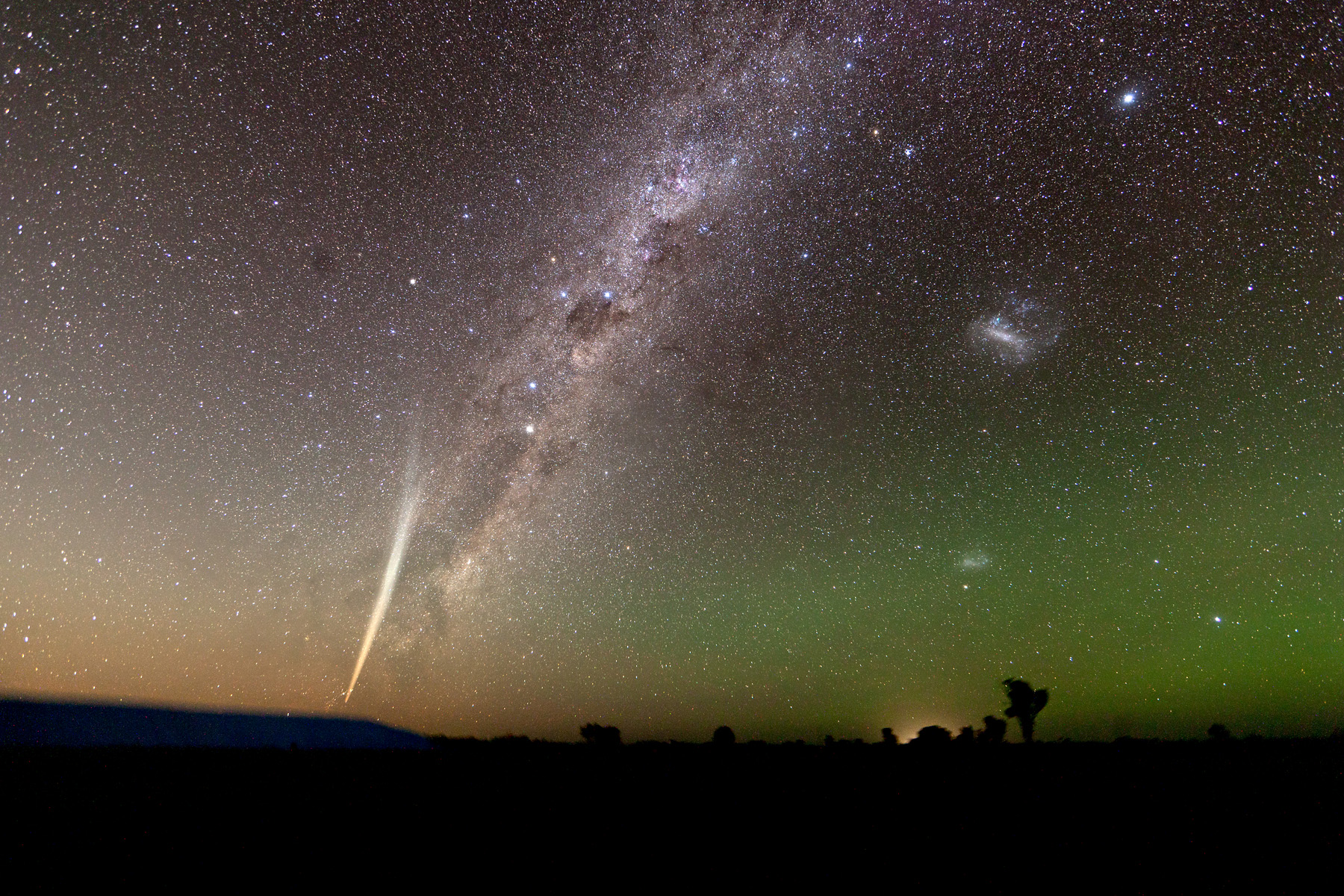Cheezy the Wiz
Socialist In A Hurry
A comet from the Oort Cloud has entered the Solar System for the first time, and will pass Earth in November of this year with potentially spectacular results.
http://www.space.com/19796-comet-ison-explained-infographic.html

If this comet survives its very close pass to the Sun, when it swings around the other side it will come [safely] close to Earth with a very long tail, and would rival the full moon for brightness. It could take up a large portion of the night sky, and even be visible during the daytime during its perihelion, if one holds their hand in front of the Sun itself.
Problem is, astronomers tracking the comet on its way toward the Sun are worried that it will be a dud, because it's not brightening as fast as expected, and thus may be shedding material a lot faster than they'd hoped.
http://www.space.com/19796-comet-ison-explained-infographic.html

Named after the International Scientific Optical Network, Comet ISON officially designated "C/2012 S1 (ISON) has the potential to be the most spectacular comet of the century. But it could also prove to be a dud. A critical moment will be perihelion passage, when the comet comes closest to the sun.
On Nov. 28, 2013, the head of the comet passes 800,000 miles (1.2 million kilometers) above the sun's surface. This is closer to the sun's surface than the sun's own diameter.
If it survives its close brush with the sun without breaking up, Comet ISON will make a hairpin turn past the sun, whipping around onto the outbound leg of its orbit. The comet could provide a spectacular display in Earths skies in November and December.
Astronomers have high hopes because Comet ISON seems to be a new comet fresh from the Oort cloud, a zone of deep-frozen objects orbiting in the dark outlands of our solar system. The most optimistic prediction is that Comet ISON could rival the Great Comet of 1680.
The performance of comets cannot be accurately predicted. Some previous "great comets" such as Comet Elenin in 2011, fizzled instead.
Comet ISON is believed to be making its first trip to the sun, and so is hoped to still have most of its volatiles intact. Volatiles are the substances which heat up and blast off the comet's nucleus to form the wispy comet tail which can stretch for millions of miles through space.
If this comet survives its very close pass to the Sun, when it swings around the other side it will come [safely] close to Earth with a very long tail, and would rival the full moon for brightness. It could take up a large portion of the night sky, and even be visible during the daytime during its perihelion, if one holds their hand in front of the Sun itself.
Problem is, astronomers tracking the comet on its way toward the Sun are worried that it will be a dud, because it's not brightening as fast as expected, and thus may be shedding material a lot faster than they'd hoped.

 that could prove to be a pretty good meet up, actually.
that could prove to be a pretty good meet up, actually. 